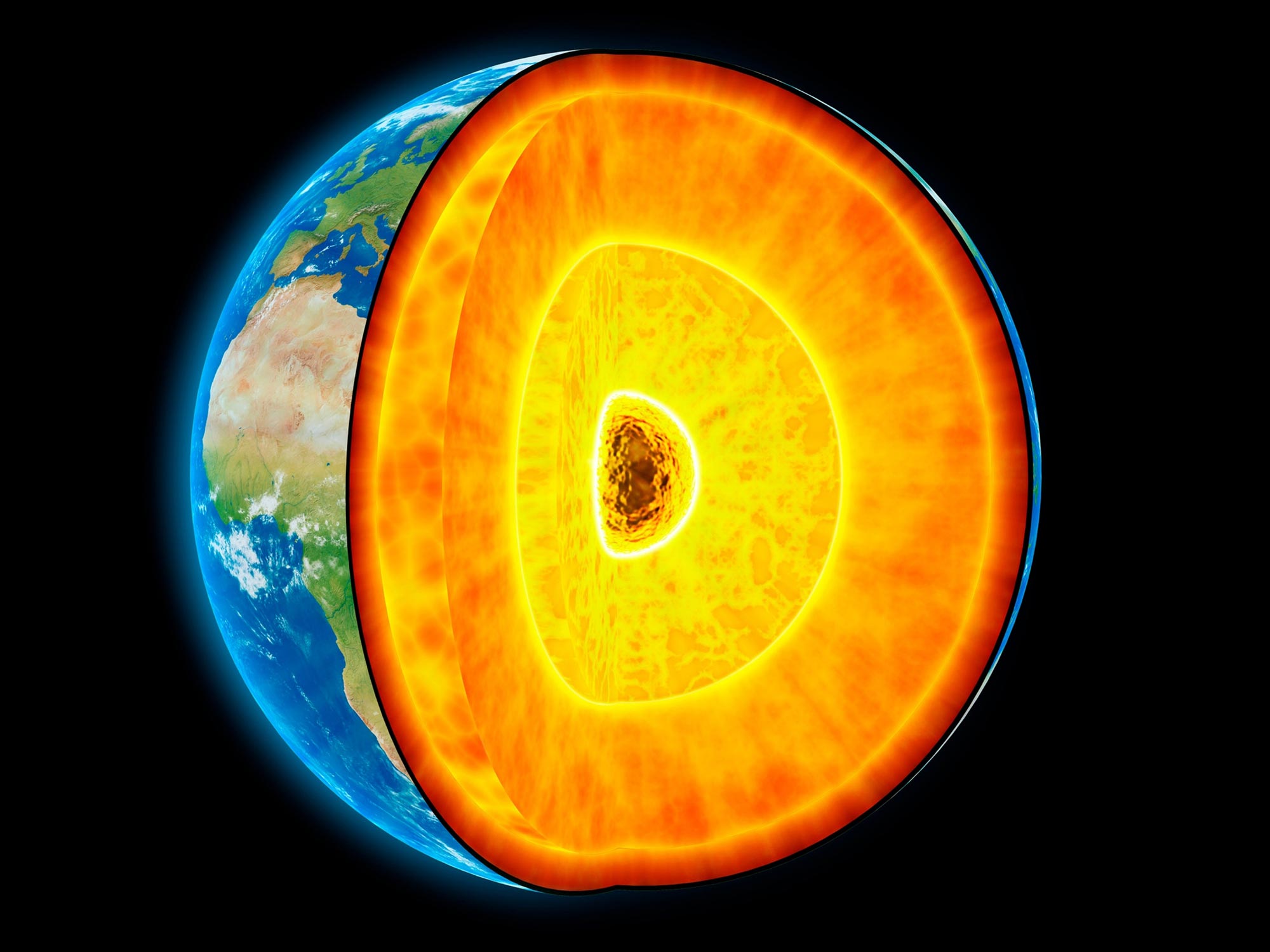
Разликата от една секунда във времето за пътуване на група сеизмични вълни ни дава важен и безпрецедентен поглед върху това, което се случва дълбоко в Земята.
Теорията подкрепя нашето разбиране за конвекцията във външното ядро на Земята и нейната функция за контролиране на магнитното поле на планетата. Учените не са наблюдавали директно конвективни потоци или как те могат да се променят. Геологът от Virginia Tech Ying Zhou предоставя доказателства за първи път.
Голямо земетресение разтърси района на островите Кермадек в южната част на Тихия океан през май 1997 г. Малко повече от 20 години по-късно, през септември 2018 г., второ голямо земетресение удари същото място с вълни от сеизмична енергия, излъчвана от същия регион.
Въпреки че две десетилетия сеизмичност разделят земетресенията, тъй като се случиха в един и същи регион, се очаква те да изпратят сеизмични вълни през слоевете на Земята със същата скорост, каза Ин Джоу, геолог в отдела за земни науки във Virginia Tech. науки.

Синята пътека показва сеизмична вълна, проникваща в ядрото, движеща се през регион във външното ядро, където сеизмичната скорост се е увеличила поради предаването на поток с нисък интензитет в региона. Кредит: Ying Zhou от Virginia Tech
Въпреки това, в данните, записани в четири от над 150-те глобални сеизмични мрежови станции, които записват сеизмични вибрации в реално време, Джоу откри изненадващи аномалии между двойните събития. По време на земетресението през 2018 г. група сеизмични вълни, наречени SKS вълни, се движеха с около една секунда по-бързо от своите колеги от 1997 г.
Според Джоу, чиито резултати бяха публикувани наскоро в
Blue lines are seismic rays in the outer core, where core-penetrating seismic waves moved through that region faster in 2018 than in 1997. Credit: Image courtesy of Ying Zhou
Scientists also have only been able to speculate about the source of gradual changes in strength and direction of the magnetic field that have been observed, which likely involves changing flows in the outer core.
“If you look at the north geomagnetic pole, it’s currently moving at a speed of about 50 kilometers (31 miles) per year,” Zhou said. “It’s moving away from Canada and toward Siberia. The magnetic field is not the same every day. It’s changing. Since it’s changing, we also speculate that convection in the outer core is changing with time, but there’s no direct evidence. We’ve never seen it.”
Zhou set out to find that evidence. The changes happening in the outer core aren’t dramatic, she said, but they’re worth confirming and fundamentally understanding. In seismic waves and their changes in speed on a decade time scale, Zhou saw a means for “direct sampling” of the outer core. That’s because the SKS waves she studied pass right through it.
“SKS” represents three phases of the wave: First it goes through the mantle as an S wave, or shear wave; then into the outer core as a compressional wave; then back out through the mantle as an S wave. How fast these waves travel depend in part on the density of the outer core that’s in their path. If the density is lower in a region of the outer core as the wave penetrates it, the wave will travel faster, just as the anomalous SKS waves did in 2018.
“Something has changed along the path of that wave, so it can go faster now,” Zhou said.
To Zhou, the difference in wave speed points to low-density regions forming in the outer core in the 20 years since the 1997 earthquake. That higher SKS wave speed during the 2018 earthquake can be attributed to the release of light elements such as hydrogen, carbon, and oxygen in the outer core during convection that takes place as the Earth cools, she said.
“The material that was there 20 years ago is no longer there,” Zhou said. “This is new material, and it’s lighter. These light elements will move upward and change the density in the region where they’re located.”
To Zhou, it’s evidence that movement really is happening in the core, and it’s changing over time, as scientists have theorized. “We’re able to see it now,” she said. “If we’re able to see it from seismic waves, in the future, we could set up seismic stations and monitor that flow.”
What’s next
That’s Zhou’s next effort. Using a method of wave measurement known as interferometry, her team plans to analyze continuous seismic recordings from two seismic stations, one of which will serve as a “virtual” earthquake source, she said.
“We can use earthquakes, but the limitation of relying on earthquake data is that we can’t really control the locations of the earthquakes,” Zhou said. “But we can control the locations of seismic stations. We can put the stations anywhere we want them to be, with the wave path from one station to the other station going through the outer core. If we monitor that over time, then we can see how core-penetrating seismic waves between those two stations change. With that, we will be better able to see the movement of fluid in the outer core with time.”
Reference: “Transient variation in seismic wave speed points to fast fluid movement in the Earth’s outer core” by Ying Zhou, 25 April 2022, Communications Earth & Environment.
DOI: 10.1038/s43247-022-00432-7

„Тотален фен на Twitter. Нежно очарователен почитател на бекона. Сертифициран специалист по интернет.“








More Stories
Как учените смятат да построят база на Луната?
„Треска на ленивец“ или Оровирус навлезе в Съединените щати от Куба – ето какво трябва да знаете
Идентични следи от стъпки на динозаври открити на два континента